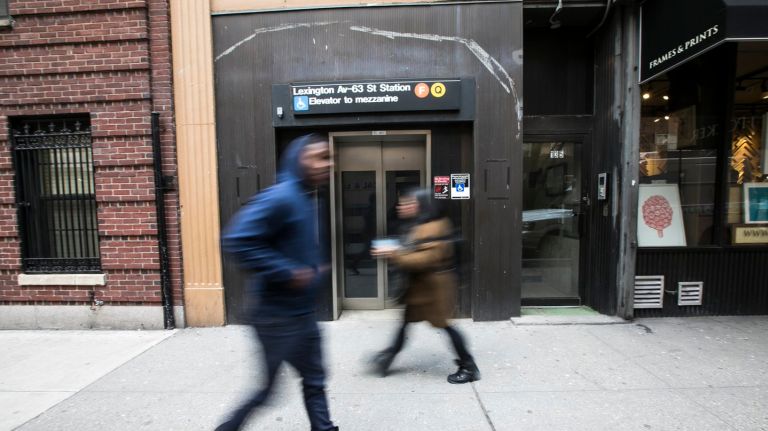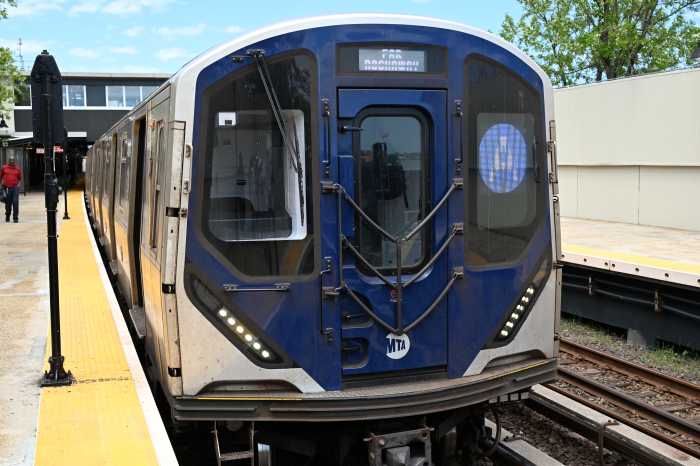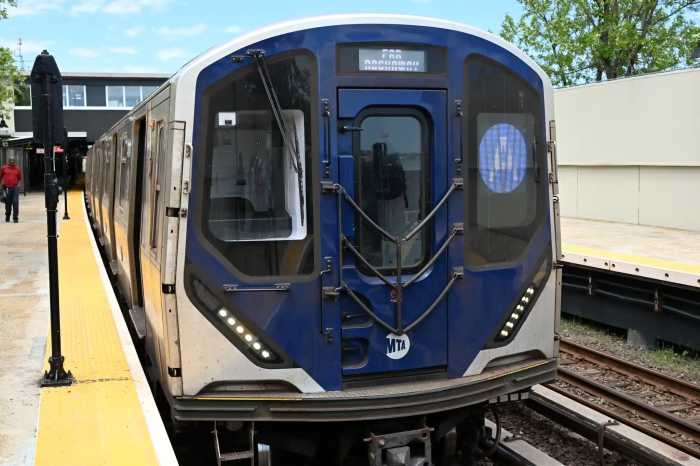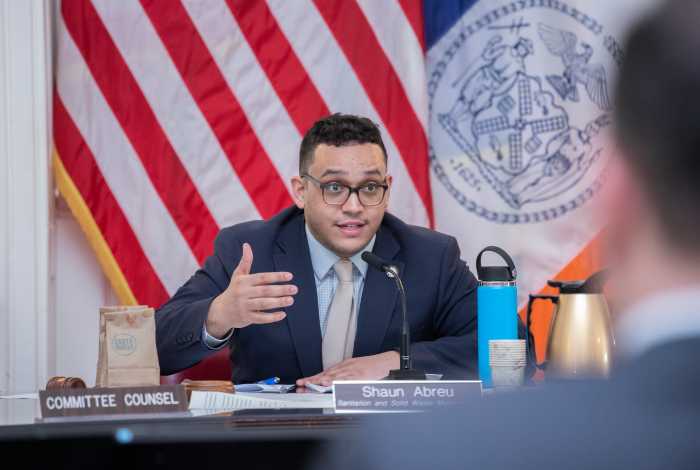
In a subway system notorious for its accessibility problems, the MTA is struggling to keep the station elevators it does have in service.
The agency’s elevator performance has declined over the past five years, making difficult journeys for wheelchair users even more complicated and unpredictable, according to MTA data.
The MTA’s downward trend comes as cities such as Boston have improved accessibility and elevator performance and, according to a new analysis from TransitCenter, as the MTA has seen its number of unfilled elevator and escalator maintainers balloon.
“These factors contribute to the impression that the MTA doesn’t put as much resources into this division as it probably should and I think that bears out in the fact that we see elevator reliability that’s really in the tank right now and getting worse,” TransitCenter advocacy associate Colin Wright said.
“Given that there are so few options for riders who can’t use the stairs to access stations, we need to make sure that the elevators that we do have are reliable for them and right now they’re really not,” he added.
Elevator uptime for the roughly 249 in the system, measured by the MTA in terms of percentages in which elevators are available for use, was at 95.9 percent on average in 2017, down from 97.3 percent in 2013, according to the agency data.
The MTA has set a goal for elevators to be available 96.5 percent of the time. It had briefly increased that goal to 97.1 percent in 2009, but dropped it back down to 96.5 percent in 2011, according to the MTA.
While those figures appear high — still an A on an exam — it translates to the MTA being comfortable with having its elevators out of service for two weeks in a year.
In Boston, the Massachusetts Bay Transportation Authority managed to improve elevator performance through a mix of contractors and elevator support staff, with availability improving from 90 percent in 2006 to 99.5 percent in 2008.
As the MTA’s elevator performance slid, the number of unfilled elevator and escalator maintenance positions at the agency grew. In the MTA’s year-end report for 2017, it had 397 elevator and escalator maintainers on staff, roughly 21 percent lower than the 505 positions it had budgeted for. That’s up from a 5.4 percent gap in 2013.
The 2017 gap in unfilled positions is far higher than most other maintenance positions at New York City Transit and comes amid a hiring boom of elevator workers in the private sector across the New York region, Bureau of Labor Statistics show.
The number of elevator installer and repairer positions in the metropolitan area increased from just below 2,500 workers in 2012 to about 3,800 in 2016. During that time, hourly base wages in the private sector increased as the MTA’s wages remained flat.
By 2016, there was about a $9 difference — $43.39 in the private sector, compared to $34.50 at the MTA.
Just about one quarter of the MTA subway system, roughly 112 stations, are compliant with the American with Disabilities Act. To make sure the relatively few accessible stations are actually accessible, Wright and TransitCenter believe the MTA must either increase wages for the position or contract out the maintenance of elevators altogether.
Tony Utano, president of Transport Workers Union Local 100, said that retaining current elevator staffers and hiring new workers has been a problem for years. He believes his union is on the path of solving the issue. Through negotiations with the MTA last year, the union secured higher wages and a new, promotional elevator and escalator repair specialist position.
“Every time they build a big building in New York, elevator mechanics on the outside are making much more money and they don’t come here,” Utano said, referring to the private sector versus the MTA.
Since the negotiations toward the end of the year, the MTA has hired about 30 related maintenance positions, Utano said. There is still a wage gap, but with public sector and union benefits, the discrepancies more closely even out, he said. Utano believes the MTA is on track to filling the remaining elevator and escalator maintenance positions by the end of the year.
TransitCenter believes other factors could be playing a role in the system’s decline, too, such as outdated controllers — the equipment that serves as the brain of elevators. But the union downplayed the tech’s role in elevator performance.
“Everything in Transit is old,” said John Chiarello, vice president of the Maintenance of Way division at the union. “Once we get to full staffing, I think you’ll see availability improve.”
New York City Transit president Andy Byford considers accessibility to be one of his four core pillars of service for the agency.
“My mobility-impaired customers should not face a lottery of, ‘Will my machine be available for me at my local station, or not?’ That’s unacceptable,” he said.
Last month, Byford announced that he would be pursuing studies on the feasibility and cost of making the remainder of the subway system ADA accessible. This year, 150 stations will be surveyed, with the remainder being studied next year, he said.
In the meantime, he’s working to put together “bespoke action plans” to tackle elevator outages and better communicate those outages to riders. Boosting staffing, he said, will be key to improving availability.
“We’ve been working in the union on that in order to not only attract trainees and apprentices but, critically, to retain them,” Byford said. “Because it breaks my heart to see us basically become a training school for people to then waltz off to go work for some fancy private building for more money. Why should we do that? It’s taxpayer dollars.”
Last year, two lawsuits were filed against the MTA in state and federal courts arguing that the agency discriminates against people with disabilities because of its widespread lack of elevators in the subway system. Oral arguments were heard Monday in New York Supreme Court, where Elizabeth Melas, a wheelchair user from Gravesend, went to rally with advocates beforehand.
“It’s so much trouble. We’re equal citizens to everyone else. Whether they be able-bodied or pregnant, we expect to be treated the same as everyone else,” Melas said, frustrated by what she described as the lack of progress since the ADA passed in 1990. “It’s been 28 years and they haven’t done much.”








































